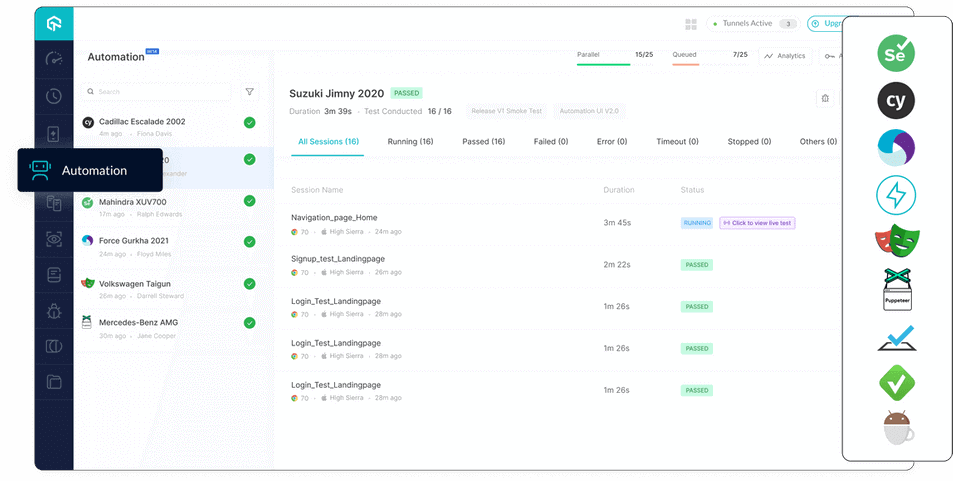
Any organisation that wishes to stay ahead of the curve must stay current with the newest developments in the continually expanding field of software development. The latest methods, techniques, and tools being used by software developers worldwide are referred to as trends in the industry. These trends, which are motivated by the need to produce high-quality software fast and effectively, provide several advantages to businesses who are prepared to adopt them.
We’ll examine some of the most well-liked developments in software development in this blog post, including low-code/no-code platforms, cloud computing, DevOps, and artificial intelligence (AI). To show how each trend can be used in practical situations, we will outline its advantages and offer use instances. You will have a greater grasp of how software development trends can benefit your company’s efficiency, productivity, and ability to compete in the current fast-paced digital environment by the end of this piece.
Software Development Trends
1. Low-code/no-code platforms:
Low-code/no-code platforms are software development tools that allow users to create applications with minimal coding knowledge. These platforms use visual interfaces, drag-and-drop tools, and pre-built components to speed up the development process. With low-code/no-code platforms, users can build applications more quickly and efficiently, without having to write lines of code.
The benefits of low-code/no-code platforms include faster development cycles, lower costs, and increased agility. They enable developers to create applications without having to start from scratch, reducing the time and effort needed to complete a project. This makes it easier for organizations to respond to changes in the market or customer requirements.
Some common use cases for low-code/no-code platforms include creating internal business applications, building mobile apps, and developing prototypes for new software products. These platforms are also useful for companies with limited resources who want to create applications quickly and inexpensively.
2. Artificial Intelligence (AI):
Artificial Intelligence (AI) refers to the ability of machines to perform tasks that are normally associated with human intelligence. In software development, AI is used to automate tasks such as testing, debugging, and code optimization. It can also be used to analyze large amounts of data, making it easier for developers to identify patterns and insights.
The benefits of AI in software development include improved efficiency, increased accuracy, and the ability to handle complex tasks. With AI, developers can reduce the time and effort needed to complete certain tasks, freeing up more time for more critical tasks. AI can also help identify bugs and issues before they become significant problems, improving the overall quality of software products.
Some common use cases for AI in software development include automating testing and debugging, improving code quality, and enhancing the user experience. It can also be used to analyze user behavior and preferences, helping developers create software that meets the needs and expectations of their users.
3. Cloud Computing:
Cloud computing is a delivery model for IT services that use the Internet to deliver computing capabilities. In software development, cloud computing provides developers with a flexible and scalable infrastructure, enabling them to quickly deploy, manage, and scale applications.
The benefits of cloud computing in software development include increased flexibility, reduced costs, and improved reliability. With cloud computing, developers can quickly provision the resources they need, reducing the time and effort needed to manage infrastructure. Cloud computing also reduces the need for hardware and software maintenance, lowering costs and increasing reliability.
Some common use cases for cloud computing in software development include deploying applications, managing databases, and testing and debugging. It is also used for creating development environments and collaborating on projects across distributed teams.
4. DevOps:
DevOps is a methodology that combines the practices of Dev and Ops to improve the software development lifecycle.
The benefits of DevOps in software development include faster time-to-market, improved quality, and greater efficiency. DevOps enables developers to release software more frequently, reducing the time needed to respond to changes in the market or customer requirements. It also improves quality by enabling developers to catch and fix issues earlier in the development process.
Some common use cases for DevOps in software development include continuous integration and deployment, automated testing and monitoring, and infrastructure automation. DevOps is also used for managing code repositories and collaborating on projects across distributed teams.
Benefits of Following Software Development Trends
Staying updated with the latest software development trends, particularly in ASP.NET development, can provide several benefits to a company. Firstly, it can enhance efficiency and productivity by leveraging the latest tools and techniques that can streamline workflows and automate repetitive tasks. Secondly, it can lead to better quality software that is more robust, secure, and has improved user experience. Thirdly, it can bring cost savings by reducing development and maintenance costs, and finally, it can offer a competitive advantage by differentiating the company from its competitors and delivering innovative solutions.
However, it is important to note that companies may face challenges while adopting new trends, such as a lack of expertise and resistance to change. In such cases, companies may consider hire ASP.NET developers with the required knowledge and skills to help with the implementation of new technologies. By doing so, companies can take full advantage of the benefits that following software development trends can bring.
Challenges of Following Software Development Trends
However, following software development trends can pose several challenges that need to be overcome for successful implementation. In particular, three common challenges faced by companies are a lack of expertise, resistance to change, and implementation challenges, particularly in ASP.NET development.
A lack of expertise is a significant challenge that companies may face when adopting new trends, particularly in ASP.NET development. The latest trends require specialized knowledge and skills, and companies may not have the necessary expertise in-house. This is where ASP.NET development companies can help. These companies have teams of developers who specialize in ASP.NET development and have the expertise to successfully implement new trends and technologies.
Resistance to change is another challenge that companies may face when adopting new trends. Employees may be comfortable with existing technologies and processes and may be resistant to change. This can hinder the adoption of new trends and technologies. To overcome this challenge, companies need to ensure that employees understand the benefits of the new trends and provide the necessary training and support to ensure a smooth transition.
Implementation challenges are also common when adopting new trends in software development, particularly in ASP.NET development. Implementing new technologies and methodologies may require significant changes to existing systems and processes, which can be time-consuming and challenging. However, ASP.net development Company can provide support and guidance throughout the implementation process to ensure a smooth transition.
Conclusion
In summary, keeping up with the latest trends in software development can provide several advantages to businesses such as improved productivity, software quality, cost savings, and a competitive advantage. With the constant evolution of the software development landscape, businesses must understand the benefits and applications of these trends to stay ahead and achieve their goals. To implement these trends successfully, companies need to have the necessary expertise and resources, along with a willingness to adapt to change.








